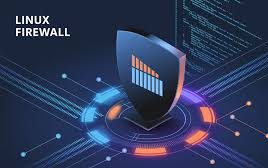-
- Troubleshooting FirewallD Configuration and Management in Linux
- Understanding FirewallD
- Common Issues with FirewallD
- Configuration Steps for Troubleshooting
- Step 1: Check FirewallD Status
- Step 2: List Active Zones
- Step 3: Verify Zone Configuration
- Step 4: Check for Blocked Ports
- Step 5: Review Logs for Errors
- Practical Examples
- Example 1: Allowing HTTP Traffic
- Example 2: Blocking an IP Address
- Best Practices for FirewallD Management
- Case Studies and Statistics
- Conclusion
Troubleshooting FirewallD Configuration and Management in Linux
In today’s digital landscape, securing network traffic is paramount for any organization. FirewallD, a dynamic firewall management tool for Linux, provides a robust solution for managing firewall rules and configurations. However, misconfigurations or unexpected behaviors can lead to security vulnerabilities or service disruptions. This guide aims to equip you with the knowledge and tools necessary to troubleshoot FirewallD effectively, ensuring your Linux systems remain secure and operational.
Understanding FirewallD
FirewallD is a front-end for iptables, designed to simplify the management of firewall rules. It operates on a zone-based model, allowing administrators to define different rules for different network interfaces. Understanding how FirewallD works is crucial for effective troubleshooting.
Common Issues with FirewallD
Before diving into troubleshooting steps, it’s essential to recognize common issues that may arise with FirewallD:
- Incorrect zone assignments
- Misconfigured services or ports
- Conflicts with other firewall services
- Changes not taking effect after configuration
Configuration Steps for Troubleshooting
Step 1: Check FirewallD Status
Begin by verifying that FirewallD is running. Use the following command:
sudo systemctl status FirewallD
If it is not active, start it with:
sudo systemctl start FirewallD
Step 2: List Active Zones
Next, check the active zones and their configurations:
sudo firewall-cmd --get-active-zones
This command will display the zones currently in use and their associated interfaces.
Step 3: Verify Zone Configuration
To inspect the rules for a specific zone, use:
sudo firewall-cmd --zone= --list-all
Replace with the name of the zone you wish to inspect. This will show you the services, ports, and other settings configured for that zone.
Step 4: Check for Blocked Ports
If you suspect that a service is being blocked, check the ports:
sudo firewall-cmd --zone= --list-ports
Ensure that the required ports for your applications are open. If not, you can add them using:
sudo firewall-cmd --zone= --add-port=/tcp --permanent
Don’t forget to reload the firewall to apply changes:
sudo firewall-cmd --reload
Step 5: Review Logs for Errors
FirewallD logs can provide insights into issues. Check the logs using:
sudo journalctl -u FirewallD
Look for any error messages or warnings that could indicate misconfigurations.
Practical Examples
Example 1: Allowing HTTP Traffic
To allow HTTP traffic through the public zone, execute the following commands:
sudo firewall-cmd --zone=public --add-service=http --permanent
sudo firewall-cmd --reload
This configuration allows web traffic to reach your server.
Example 2: Blocking an IP Address
If you need to block a specific IP address, use:
sudo firewall-cmd --zone=drop --add-rich-rule='rule family="ipv4" source address="" drop' --permanent
sudo firewall-cmd --reload
Replace with the actual IP you wish to block.
Best Practices for FirewallD Management
- Regularly review and update firewall rules to adapt to changing network requirements.
- Use rich rules for complex configurations, allowing for more granular control.
- Backup your FirewallD configuration before making significant changes.
- Test changes in a staging environment before applying them to production systems.
Case Studies and Statistics
According to a study by the Ponemon Institute, 60% of organizations experienced a data breach due to misconfigured firewalls. This statistic underscores the importance of proper firewall management and troubleshooting practices.
Conclusion
Troubleshooting FirewallD configurations is essential for maintaining a secure and efficient Linux environment. By following the steps outlined in this guide, you can effectively diagnose and resolve common issues. Remember to adhere to best practices and regularly review your firewall settings to ensure optimal performance. With these tools and knowledge at your disposal, you can confidently manage FirewallD and protect your network from potential threats.
